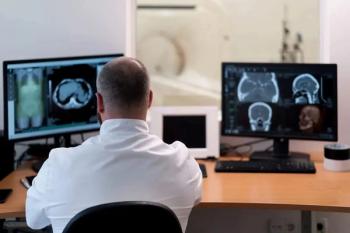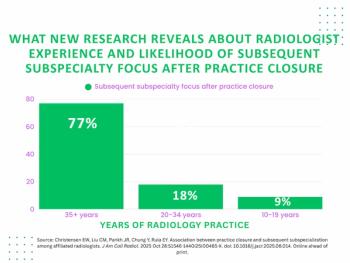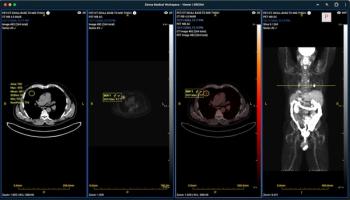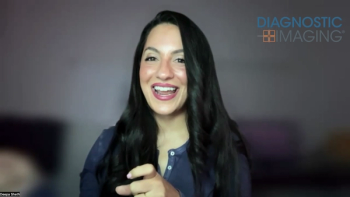
Who is Radiology in 2017?
The anatomy of the radiology workforce in 2017.
ACR’s annual analysis of the radiology workforce reveals telling trends about the profession, and this year’s
The
Background
Practice leaders completed an electronic survey asking them to self-identify their type of practice and the makeup of their groups. Twenty-six percent of practice leaders responded to the survey, which the ACR deemed to represent 33% of all practicing radiologists in the United States. This was a decrease in the 39% of practicing radiologists represented in the
Women
The makeup of females in radiology continues to be a topic of discussion. About 21% of radiologists are female, 8% of which are practice leaders. This is not statistically significant when compared with the gender distribution of all full-time radiologists, according to the study.
Age and Retirement
Radiologists continue to pay close attention to retirement trends. A quarter of practice leaders reported having a radiologist retire in 2017, and 50% of retirees were older than 65. Sixty-two percent of all radiologists are between the ages of 35 and 55.
Subspecialty
Since 2012, the percentage of general radiologists has dropped significantly: 32.5% of radiologists reporting as general radiologists in 2012 and only 10.4% reporting as general radiologists in 2017. Body imagers make up the largest subspecialty, general interventional radiology and neuroradiology are close seconds.
Notable Trends
Other notable trends, according to the study authors, is the number of part-time radiologists (16%) and the number of practices employing part-time radiologists (76%). Researchers also attribute increasing
[[{"type":"media","view_mode":"media_crop","fid":"62582","attributes":{"alt":"","class":"media-image","id":"media_crop_8454356682918","media_crop_h":"0","media_crop_image_style":"-1","media_crop_instance":"7951","media_crop_rotate":"0","media_crop_scale_h":"0","media_crop_scale_w":"0","media_crop_w":"0","media_crop_x":"0","media_crop_y":"0","title":" ","typeof":"foaf:Image"}}]]
Newsletter
Stay at the forefront of radiology with the Diagnostic Imaging newsletter, delivering the latest news, clinical insights, and imaging advancements for today’s radiologists.






























